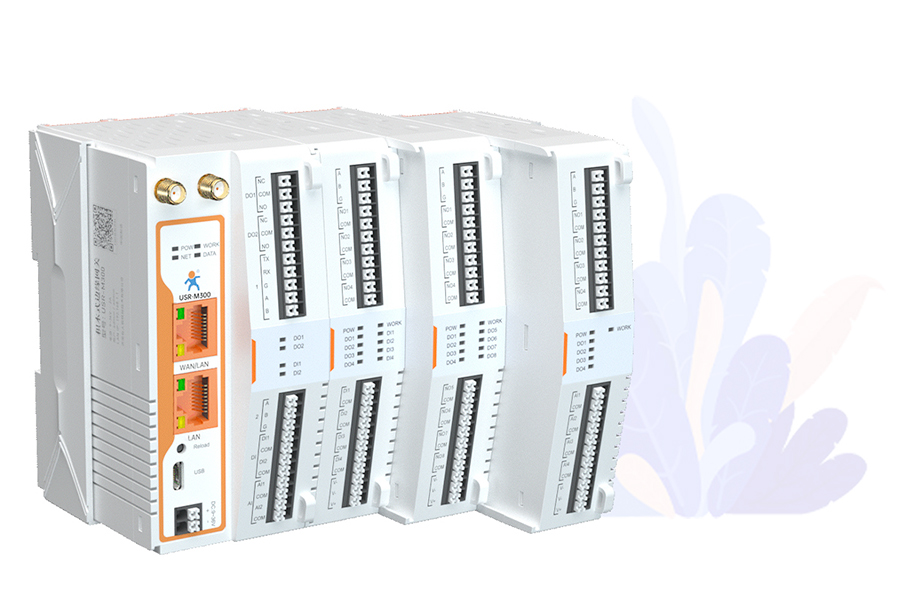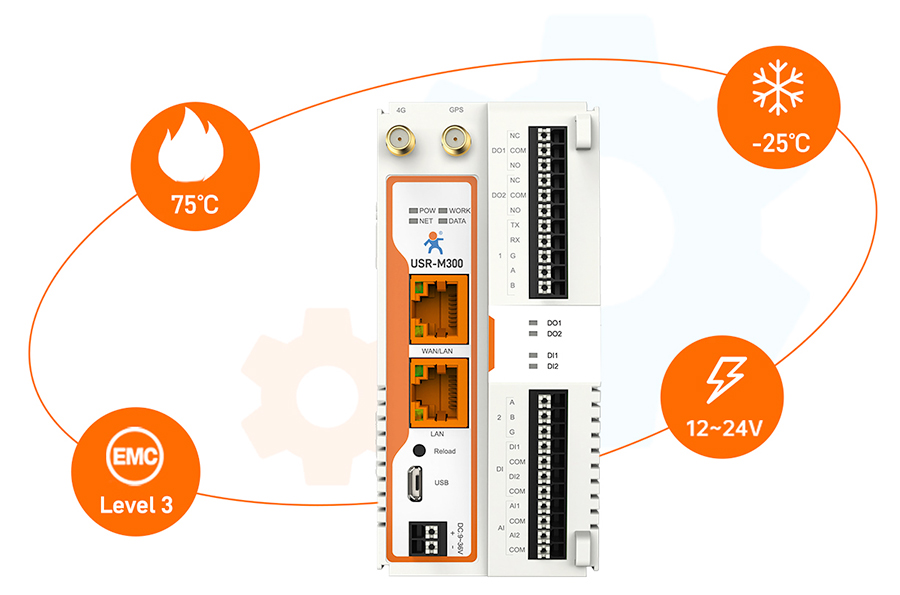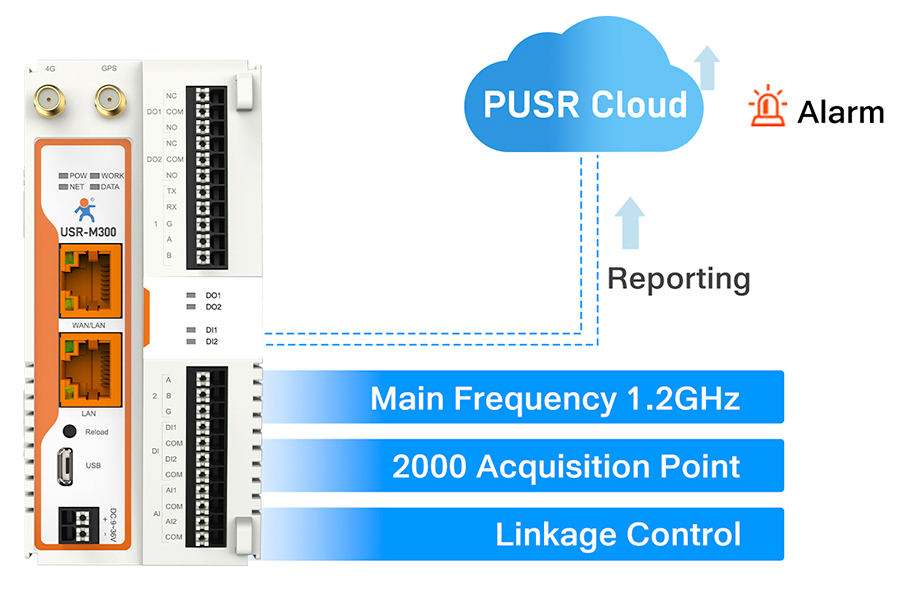In a nutshell, an IoT gateway is a physical computer that is deployed locally to collect, process, and analyze data at the edge of the network.They are similar to the routers found in most homes, but offer much more in terms of processing, storage capacity, and memory.
IIoT gateways collect and study large amounts of data from connected devices, sensors, and machines in the IoT ecosystem.The gateway preprocesses the information before forwarding it to the cloud platform to convert it into meaningful intelligence.
Imagine if a tiny sensor could generate tens of thousands of data points per second;Preconditioning at the edges is definitely a good idea!You can aggregate, aggregate, and synchronize information from different devices, and then forward it to the cloud.
The IIoT gateway provides local processing and storage functions and autonomously controls field devices based on sensor inputs.Businesses deploying IoT gateways are finding significant savings in their Internet consumption due to less raw data being sent to the cloud.
When deploying an enterprise infrastructure, they fall into two main categories:
These are compact industrial computers,Can be deployed in variable environments subject to extreme temperatures, dust, debris, vibration, and shock.
They are added with a stronger case for added reliability and durability.
As the number of IIoT applications increases over time, so does the amount of data being generated.The dramatic growth has necessitated the need for IoT gateways to reduce the pressure on the cloud to store, process, and analyze data.
In addition, they receive information from the cloud and send it back to the device for independent device management in the field.
The IIoT gateway can help improve the production of the plant by collecting information from the various devices and sensors deployed there,And use them to fine-tune the production process for higher and more efficient output.
They can reduce human error and obtain a variety of data about the manufacturing process.This information helps operators and organizations optimize their product lines.
IIoT gateways facilitate fast communication between devices.This means that they enable machines to interact with other machines, environments, and devices.
IIoT gateway supports PROFIBUS, EtherCAT, Fieldbus, PROFINET, EtherNET/IP and other industrial protocols.Helps connect different types of devices.
For example, let's say a company has legacy hardware that can't connect to the cloud.In this case, the IoT gateway helps connect them to the cloud.And allow them to safely remotely control machines and programmable logic controller.

The IoT gateway enables real-time collection and study of data collected locally at the source.This is convenient because such applications do not need to transmit data over long distances to the data center to understand what information is being collected.
In addition, devices that handle critical workloads can immediately gain insight from the data and apply it to decision-making.Since we are talking about machines used in the industrial sector, it may not be in the cloud.
Legacy equipment must deal with the delays associated with sending, processing, and transmitting data back to the industrial environment.
This is not the case with IIoT gateways because they are located locally with the industrial computers.This means that real-time data analysis and decision-making can be done in as little as a millisecond.
If you're looking for a technique that can help with predictive maintenance, you've come to the right place.Data collected by sensors and equipment can be effectively used to predict when components in a machine will typically fail.
The IIoT gateway applies a predictive model to schedule maintenance before a failure occurs. As you can see, the production line runs 24/7.Machine failures can cause production interruptions, resulting in late customer deliveries and lost profits.
But because of the insight provided by the IIoT gateway,Factories can easily reduce or eliminate the costs associated with unplanned downtime that is detrimental to the entire production process.
One of the biggest advantages of IIoT gateways is their compact design,Allow them to be installed in confine spaces -- not large enough to accommodate a full-size computer.Making the compact design a reality by passively cooling the IIoT Gateway desktop enables manufacturers to place components close to each other.
The IoT gateway has a huge input voltage, ranging from 9 to 50 VDC, making it an asset in different power input scenarios.
They are also equipped with additional functions.Such as overvoltage protection, reverse polarity protection, and power surge protection — all of which make it easy to stabilize the system's power supply and avoid damageSensitive internal components.
The IoT gateway is very robust.They can handle installations in harsh environments because they are built with tested and proven industrial-grade components.Reliable operation in the most challenging conditions.
In addition, the IoT gateway's housing is made of aluminum and steel to protect the system's most sensitive internal components.
As mentioned earlier, fanless IoT gateways can be installed in extreme environments that are often subject to frequent shocks and vibrations.They eliminate the number of connectors, cables, and screws used in the system, making them more reliable,More susceptible to any limb.
Both the fanless and rugged IoT gateways have a wide temperature range, from -40 40C to 85 85C.Deploying either gateway in an extreme environment is not a problem at all.Whether you place your gateway in the middle of the Gobi Desert during the summer or in Greenland during the winter,Applications will always run reliably and optimally.

This is a good move if you want to install the IoT gateway in a setup where Internet connectivity is problematic.Gateways have a number of wired connectivity options, including cellular and wireless, allowing them to connect to the Internet in unstable environments.
WiFi in particular provides organizations with the flexibility to configure the range of Internet consumption according to their specific requirements.Alternatively, cellular connectivity options include LTE, 4G, and 5G.IoT gateways can also connect to two different ISPs if required, as they are fitted with dual SIM slots.
The IoT gateway is energy efficient, making it ideal for deployment in environments without a stable power supply.They consume less energy than regular desktop computers because they are configured with low-power Intel processors.
However, the savings of a single IoT gateway are negligible.Only when you deploy them in large numbers will you notice a significant reduction in cost.
The primary purpose of an IoT gateway is to transfer data between devices through the use of sensors.Naturally, safety must be a top priority in making this technology work.
That's why the IoT gateway has enhanced security with TPM 2.0, a secure encryption processor.Provides hardware-based security and is responsible for making IoT gateways tamper-proof.
If you think about IoT devices in general, you'll agree that there's no area they haven't touched.From making your home "smart" with IoT devices to monitoring your industrial equipment from your desk chair,The Internet of Things has become an integral part of our lives.
The Internet of Things gateway is an important part of the Internet of Things infrastructure.Because it connects the cloud with many IoT devices and sensors.It is a combination of hardware and software that communicates seamlessly with end devices.
In industry, this technology is particularly useful because it helps track mechanical performance and ultimately reduces downtime and maintenance costs.It provides a perfect way to manage the data collected by IoT sensors.
But choosing an IoT gateway can be a daunting task.Especially if you don't know what to consider to make the appropriate choice. Let us simplify this process for you.Here are ten key points to consider in the selection process:
What do you want to accomplish with the Gateway? What is its ultimate goal?Depending on the type of data you plan to collect through your sensors, you can integrate multiple types of sensors.So you have to be clear about your purpose.
For example, the IoT gateways required by manufacturing units will be different from those used by shipping companies.This is because manufacturing sensor data is related to mechanical performance, downtime, etc.
The latter, on the other hand, will handle metrics such as fuel consumption and mileage, as well as basic information around the fleet.Because of the different requirements of the two departments, it is not meaningful to use the same Internet of Things gateway.
We live in a time when cybercrime is relatively common.Large brands such as Walmart and Domino's have been victims of online theft.Imagine integrating thousands of sensors into an IoT gateway, with all the data hacked?
This is scary, but it can mean that you don't take it lightly.Be sure to confirm that the potential IoT gateway has the appropriate data protection security features in your selection process.
Ask the vendor if they have the necessary encryption standards and authentication to protect your data from phishing.To make your life easier, here are some of the top encryption you should know about: DES, RSA, AES, and Twofish encryption algorithms.
Data protection is one thing, but storage? Your IoT gateway will collect large amounts of data from multiple devices, sensors, and machines.
It needs a place to store it. There is no way to store data on the cloud because of what happens if the gateway loses its Internet connection.Therefore, the best thing to do is to use the local storage of the gateway.
A smart building generates about 260 gigabytes of data a day, and we're sure smart cities will generate more.According to the demand, select the Internet of Things gateway with appropriate storage space, which can be expanded when the demand increases.
Where IoT gateways are deployed is also an important factor to consider and will vary depending on your industry niche.For example, if you build a vehicle, it makes sense to put all the sensors indoors,Because they give off a lot of heat and need to be in the HVAC room.
On the other hand, it is absolutely essential for telecommunications companies to place outdoor sensors at a height that can withstand extreme weather.
As the need for automated decision making and low-latency data processing increases in businesses across a wide range of industries,The global edge computing market is growing rapidly.So make sure your IoT gateway has edge computing applications that can help process and store sensor data.
The gateway should handle OTA and diagnostics, enhance reliability, reduce latency, and ensure strong data security.Given that edge computing is here to stay, there is a need to keep up with new technologies.

IoT is meaningless if connectivity across devices is poor.Therefore, you must ensure that the gateway supports connecting to the latest connection protocol,And you can access data on your smartphone and computer.
Thankfully, most gateways today support nearby connectivity via Ethernet, Bluetooth, LoRaWan, and NB-IoT.If you're looking for an option beyond these, choose a gateway that supports LTE, GPRS, and GSM.
In addition, check whether the IoT gateway supports protocols such as Modbus, HTTPS, and TCP/IP.Of course, having hardware connectivity options such as RS485 or USB ports would be a great add-on.
You can choose the IoT gateway based on the machine you are using now.But what if you want to upgrade in the future or are currently using old hardware?Are you optimistic that your IoT gateways will work with these machines even then?
Therefore, you need to check that the gateway is compatible with older and advanced devices,And the scalability should not affect the compatibility of your machine and the IoT gateway. This will save you a lot of money and headaches in the future.
Buying a machine is an expensive piece of equipment, as is choosing an IoT gateway.So you need to make sure that your gateway can integrate with your device.Even if you are looking to scale, the gateway has a robust enough architecture, with a particular focus on security that doesn't get in the way of your operations.
Many factories often use old equipment with a long service life. Upgrading machines to connect directly to the cloud is rarely economically feasible.In these cases, the gateway of choice should support the existing equipment to integrate all the data from the plant without any problems.It is not feasible to purchase a new gateway or machine.
Your IoT gateway should be customizable to your changing business needs, industry niches, and end goals.Whether it's adding storage space, installing additional security plug-ins, or connecting to multiple sources,Your IoT gateways should all be completely personalized to your goals. It should be flexible.